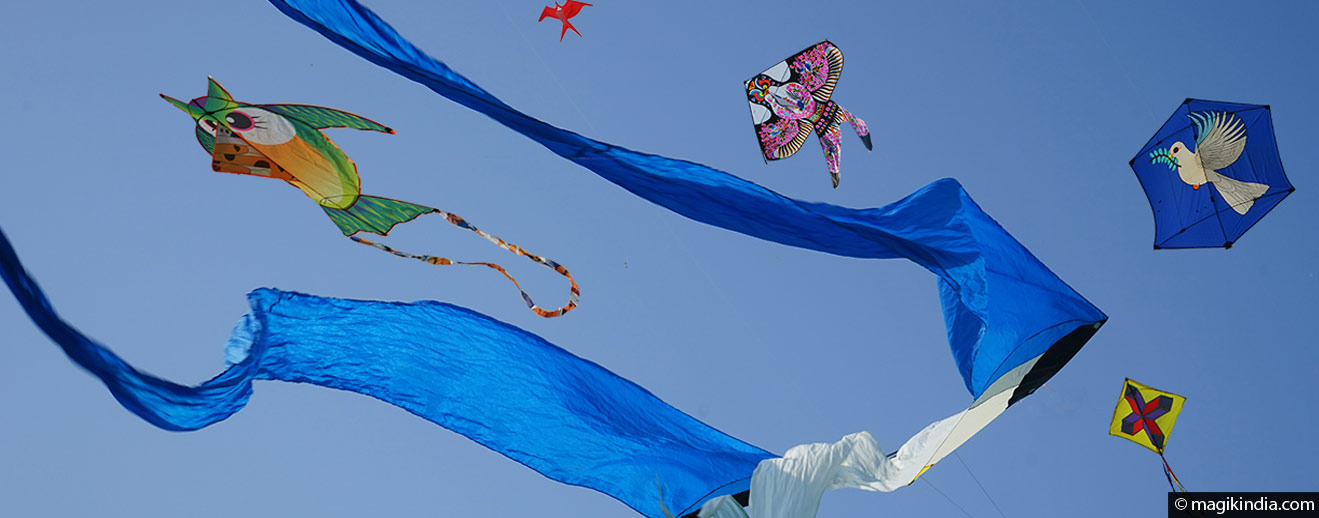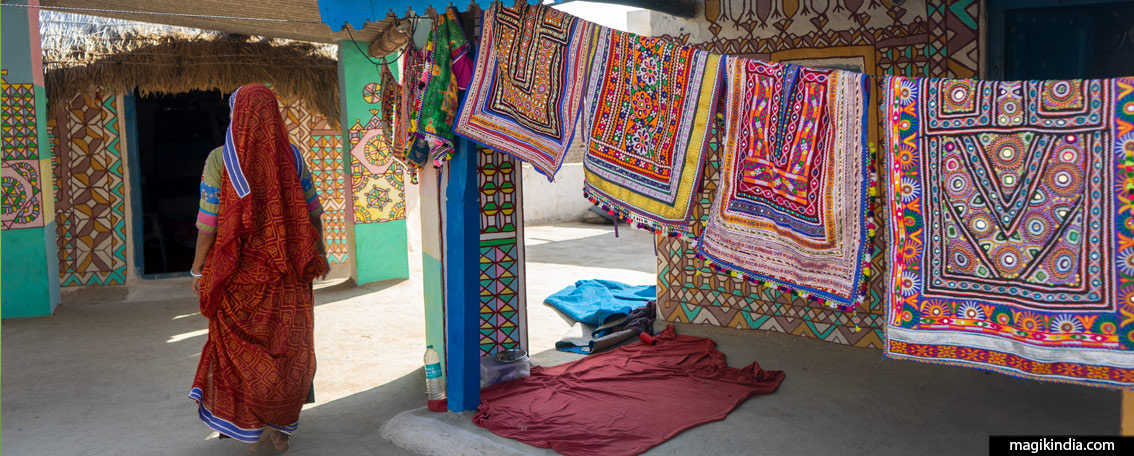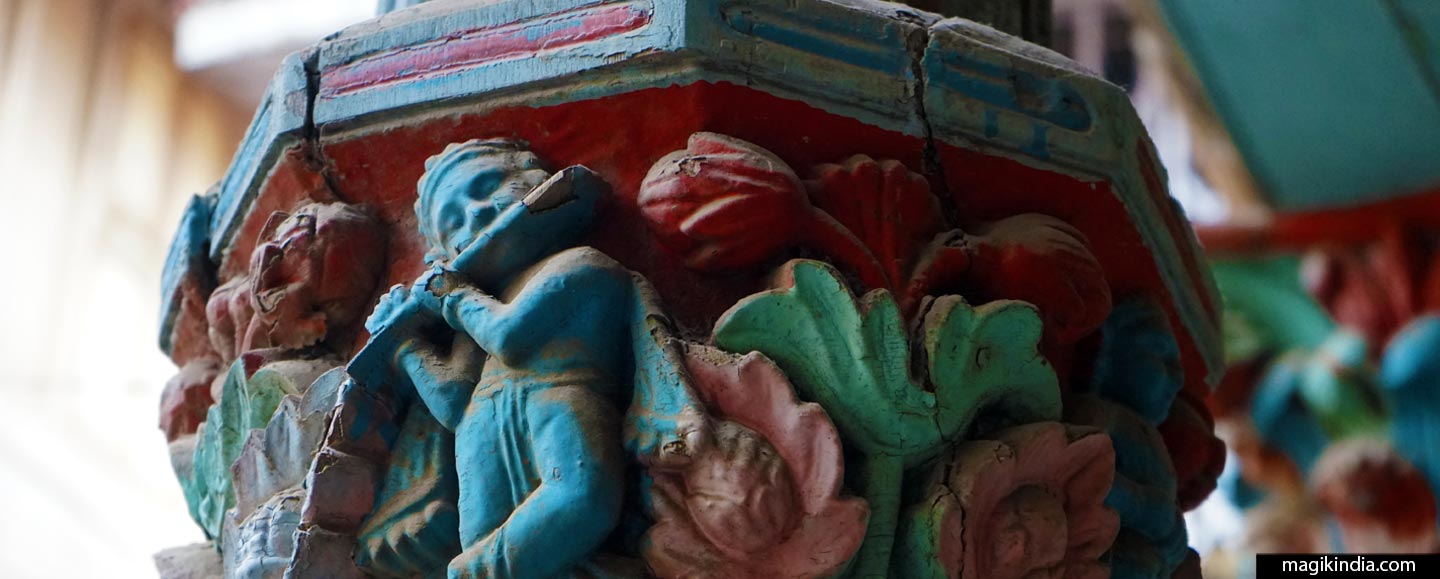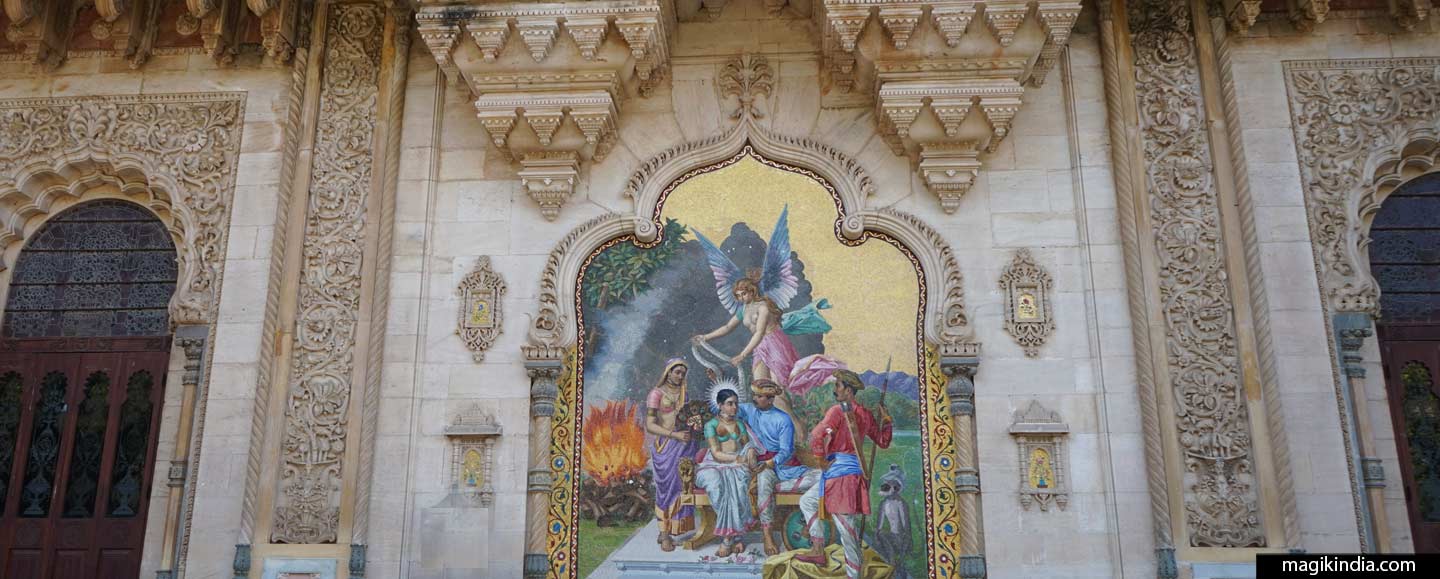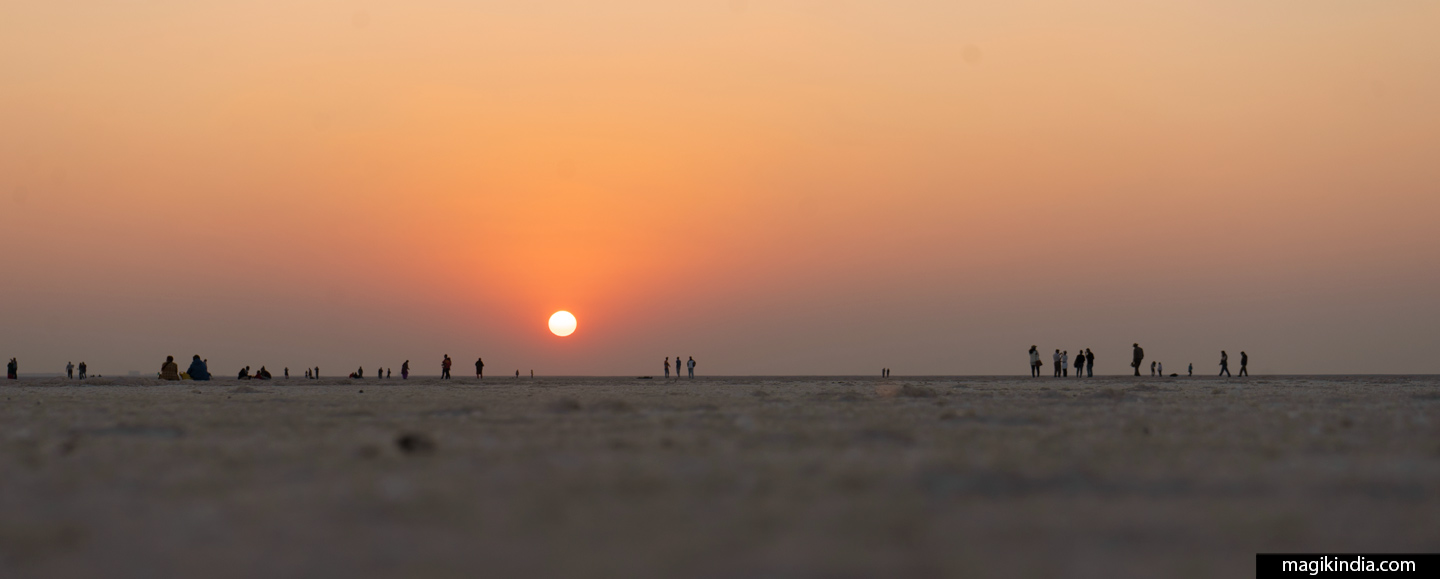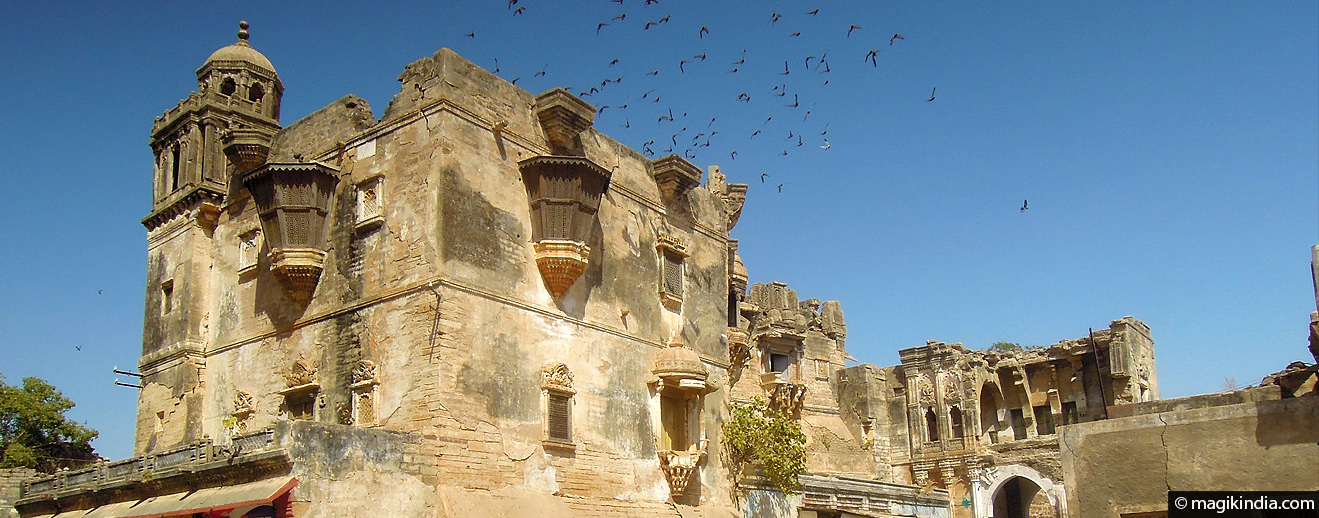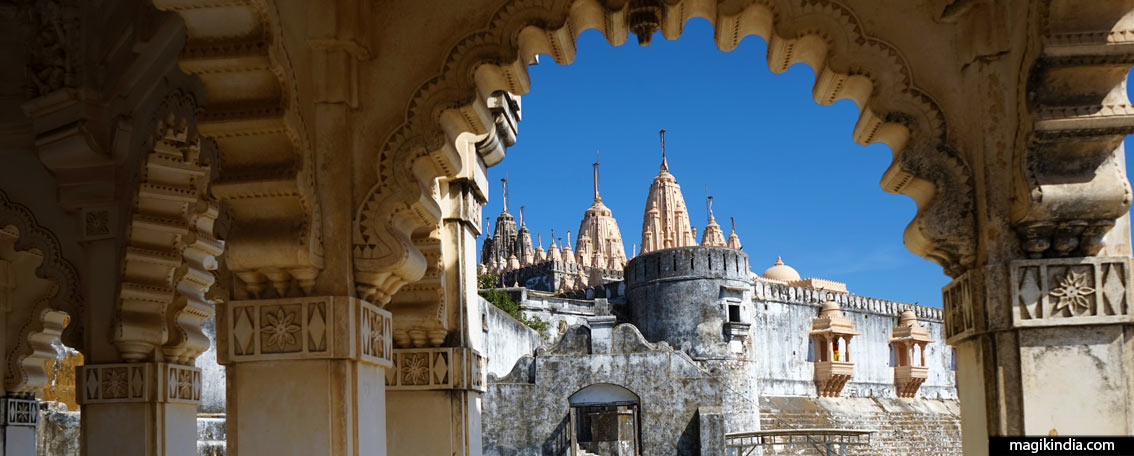
Palitana, the sacred hill of Jains
Palitana is an incredible temple complex perched on Shatrunjaya Hill that seems to touch the sky. The 3500 steps that lead to them take you on an inner journey while giving you time to enjoy the beauty of the landscape.
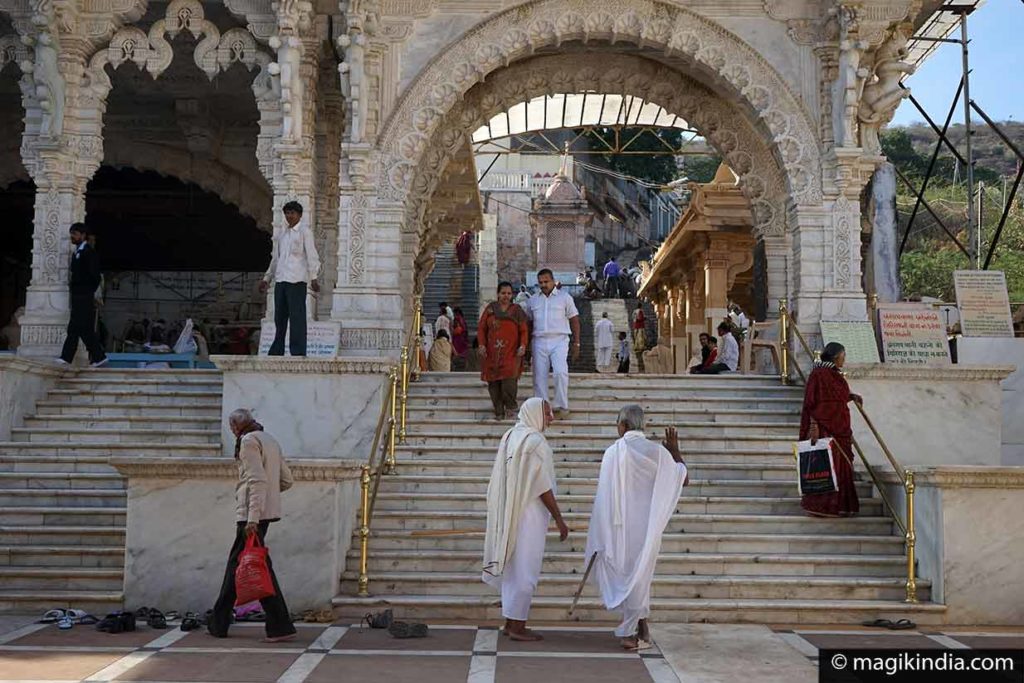
The town of Palitana, at the foot of Shatrunjaya, was once the capital of a small princely state founded by a Gohil Rajput called Shahji.
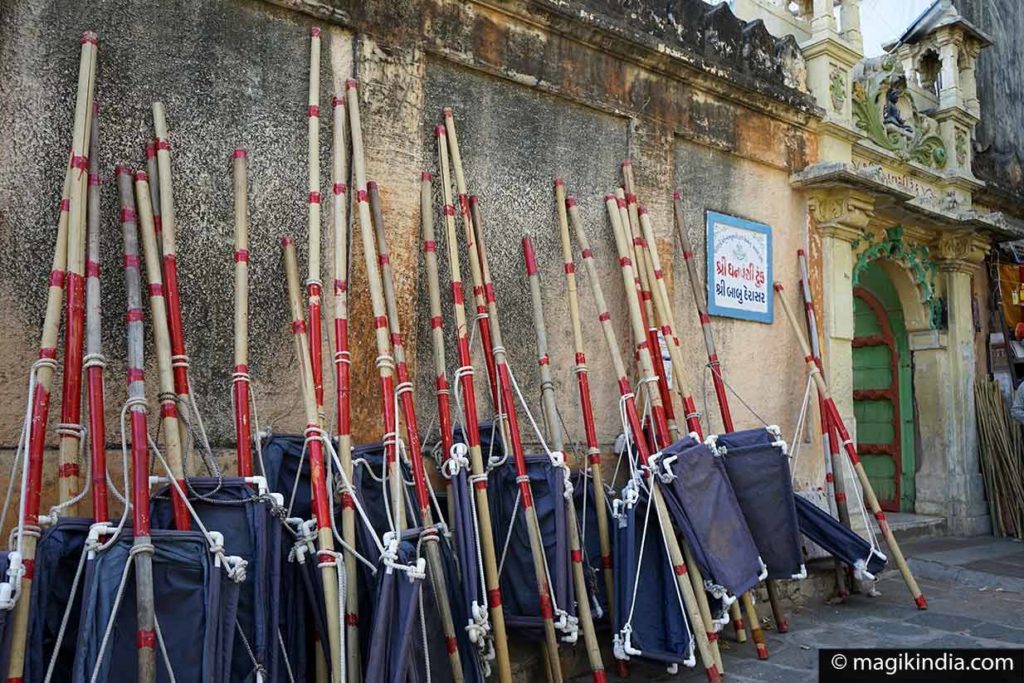
Shatrunjaya means “place of victory against inner enemies”. Along with Mount Abu, Girnar and Chandragiri, Shatrunjaya is one of the four most holy places of the Jain faith. Every aspirant is supposed to make the pilgrimage at least once in their life.
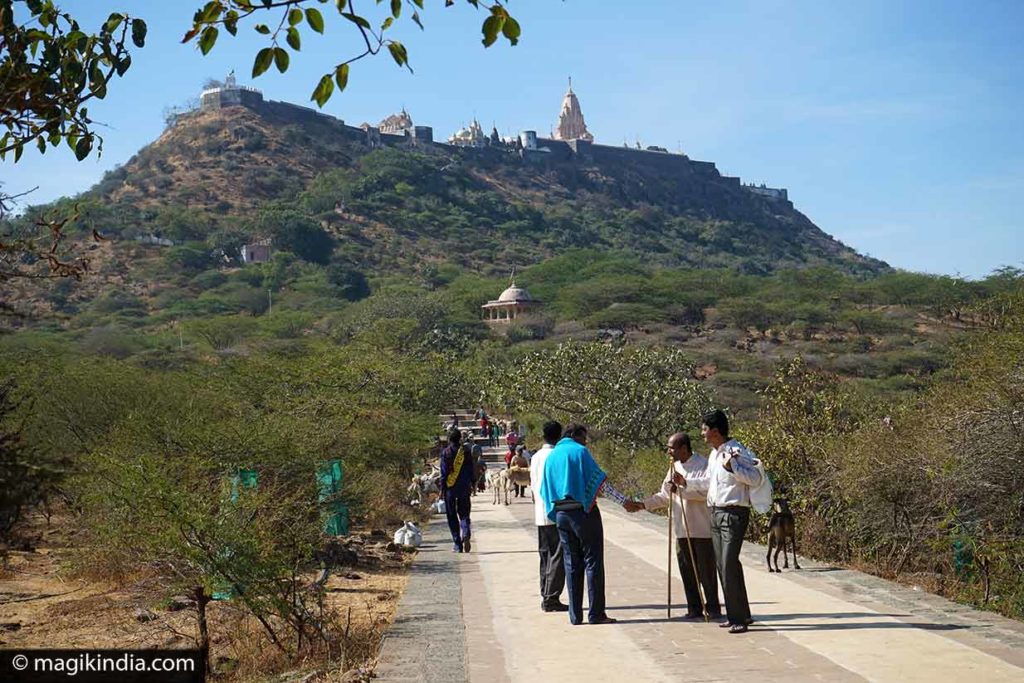
According to Jain holy scriptures, this hill is where Adinath, the first Tirthankar, reached enlightenment.
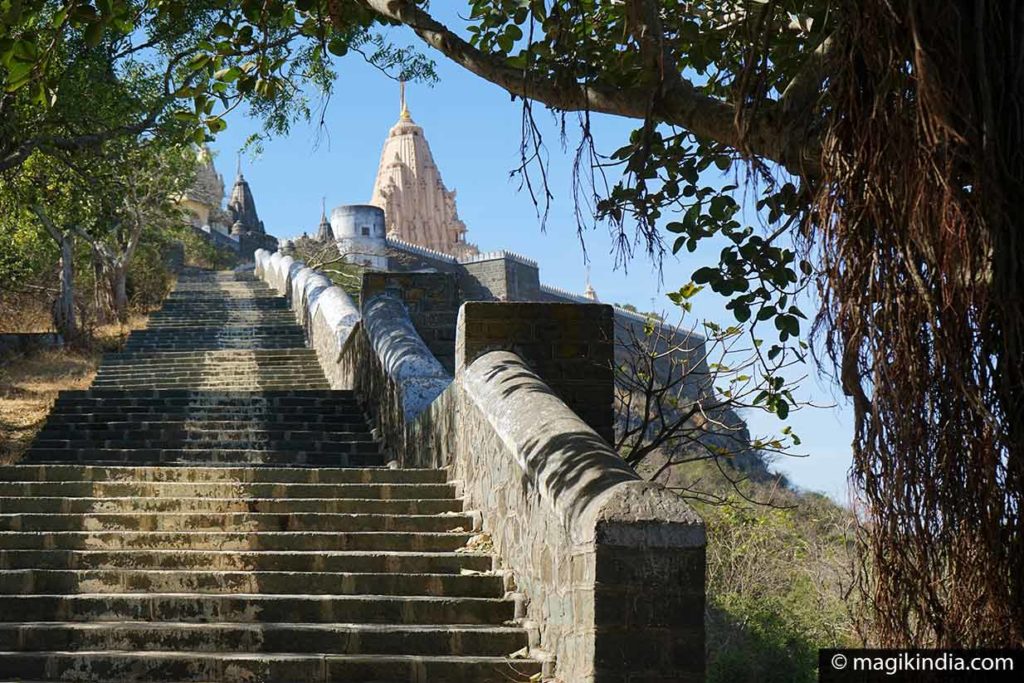
There are more than 800 temples spread over nine different enclosures on Palitana Hill ; It is the largest Jain complex in the world. The first Palitana temples is said to have been built around the 11th century, but many of them were destroyed during the Mughal invasions in the 14-15th century; most of the temples we visit now were built around the 16th century.
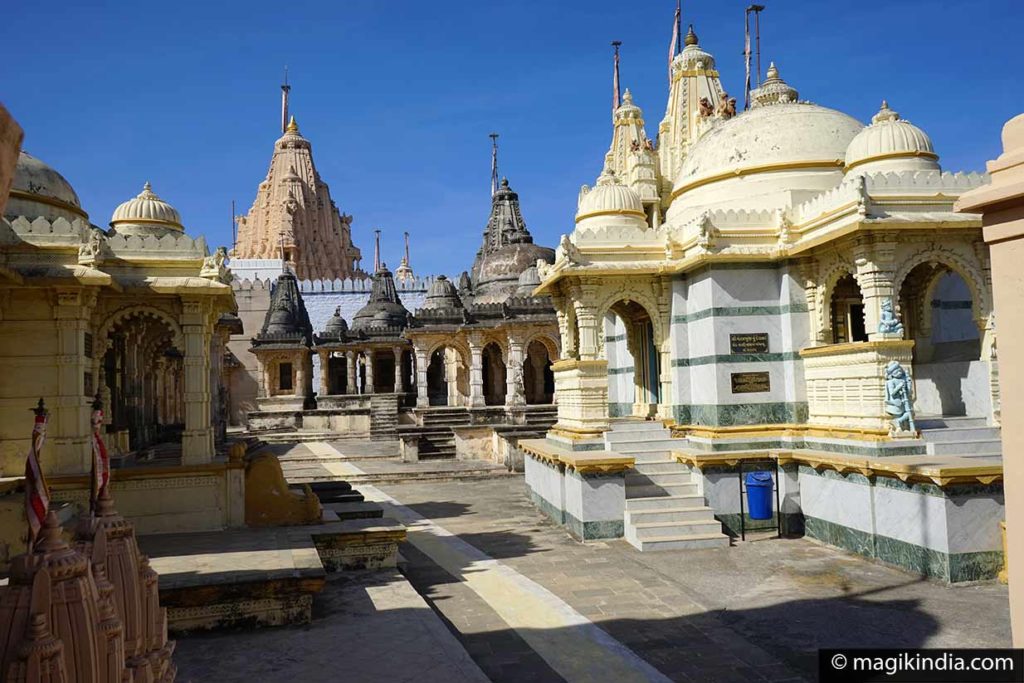
The most revered temple in Shatrunjaya is that of Adinath, whose white marble statue is dressed in gold and adorned with precious stones.
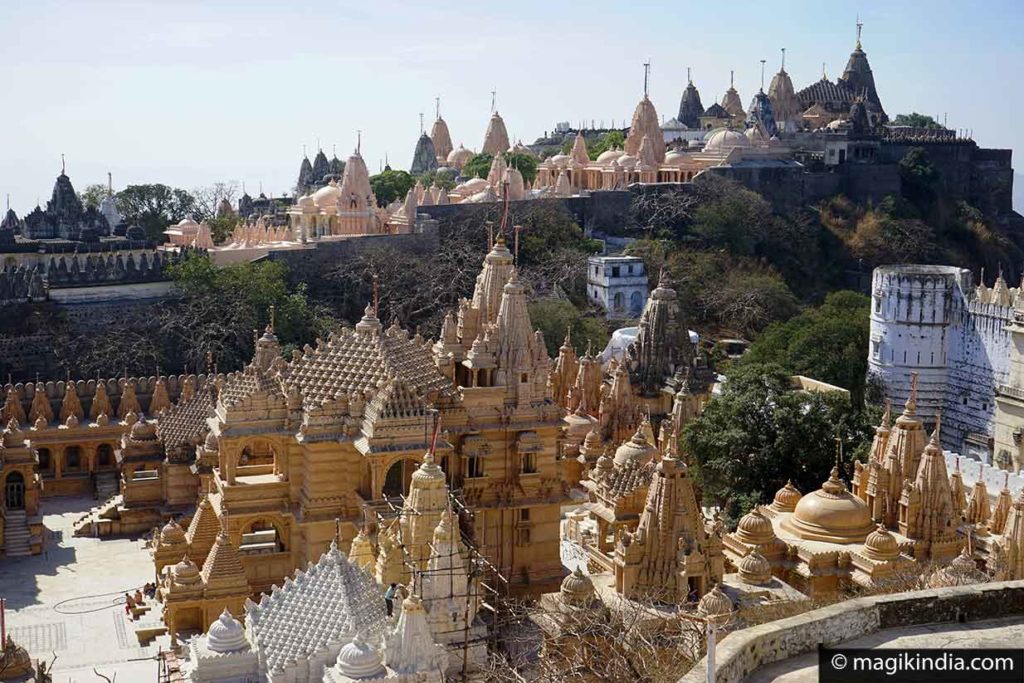
Among the other remarkable temples, there is that of the Digambars, a branch of Jainism where monks do not wear any clothing. The main shrine boasts the one meter high idol of Bhagawan Shantinath (the sixteenth Tirthankar) carved out of pure white marble.
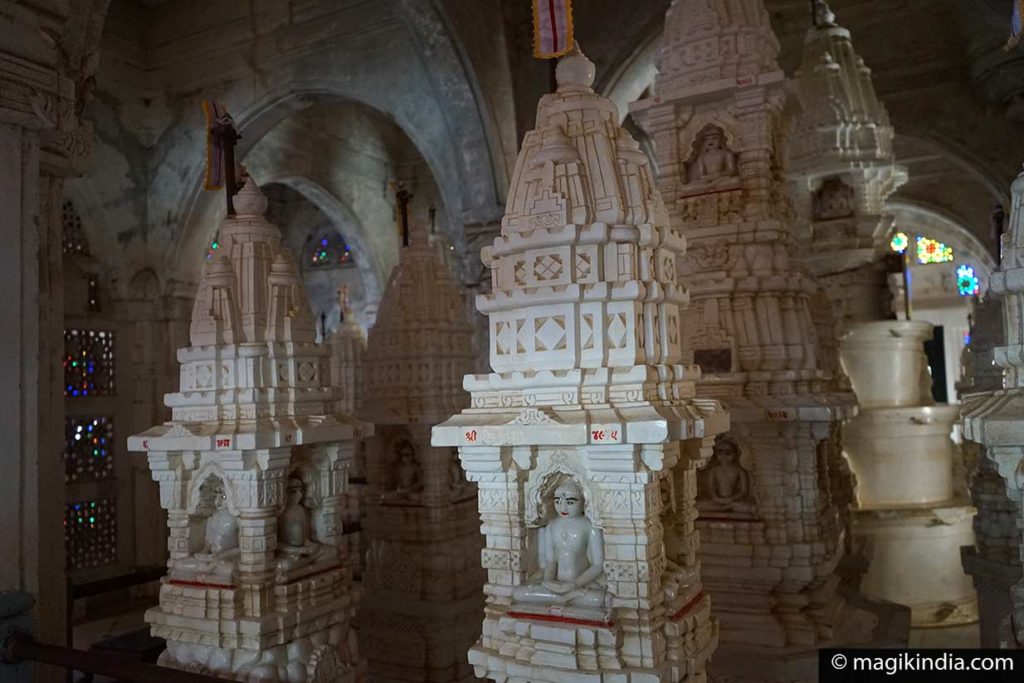
A Piece of advise for this pilgrimage
Allow at least half a day to visit the temples, including the climb (7km there and back). Leave early in the morning to avoid the scorching heat.
It is best to respect Jain customs. To comply with the Jain faith’s strict non-violent precepts, nothing made of leather, such as a belt or wallet, may be carried on the mountain. Shorts, sleeveless tops and tight clothing are considered disrespectful. Do not bring food, but do bring water.
Because it is considered as the abode of the gods, nobody, even the temple priests, is allowed to stay on the mountain overnight.
[ My pilgrimage in Palitana 🙂 ]
READ ALSO: THE MOST REVERED JAIN PLACES IN INDIA

